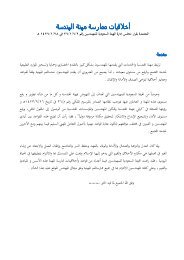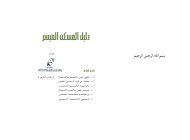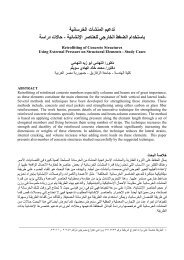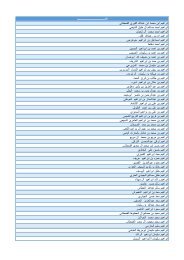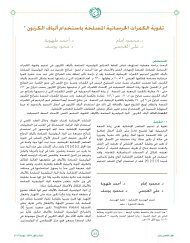benefits-of-tailoring
benefits-of-tailoring
benefits-of-tailoring
- No tags were found...
You also want an ePaper? Increase the reach of your titles
YUMPU automatically turns print PDFs into web optimized ePapers that Google loves.
The Benefits <strong>of</strong> Tailoring: Making a Project Management Methodology FitProject Management Methodologies and TailoringA Guide to the Project Management Body <strong>of</strong> Knowledge (PMBOK® Guide) (PMI, 2013b) defines a methodologyas “a system <strong>of</strong> practices, techniques, procedures and rules” (p. 546). More specifically, a project managementmethodology is a defined, documented and discoverable set <strong>of</strong> policies, practices, processes, tools, techniquesand templates that provide guidance on how projects are run within an organization. A methodology can beextensive or minimal; rigorous or lightweight; complex or simple; linear or highly iterative; described in phases ordescribed for the entire project lifecycle. There is no one, single project management methodology that shouldbe applied to all projects all <strong>of</strong> the time. A project management methodology should reflect the size, durationand complexity <strong>of</strong> each individual project, and be adapted to the industry, organizational culture and level <strong>of</strong>organizational project management maturity <strong>of</strong> the organization. A methodology is typically derived from aproject management framework document or standard such as the PMBOK® Guide.Tailoring is the process <strong>of</strong> referencing framework documents, standards and other relevant sources and utilizingthose elements that provide processes, tools and techniques that are suitable for that particular organization. Italso includes modifying existing processes currently in use by the organization. As such, the process <strong>of</strong> <strong>tailoring</strong>is a process <strong>of</strong> customizing a project management methodology. The result <strong>of</strong> <strong>tailoring</strong> is that the projectmanagement methodology will be suitable for use in specific types <strong>of</strong> projects, and a tailored methodology willreflect the size, complexity and duration <strong>of</strong> the project as appropriate for the organizational context along withadaptation to the industry within which the project is undertaken.General examples <strong>of</strong> <strong>tailoring</strong> include the trend for IT projects to use agile-based approaches, while constructionprojects more <strong>of</strong>ten use a waterfall approach. Organizational culture is another dimension influencing <strong>tailoring</strong>.An organization with a low tolerance for risk may have many processes and procedures to guide projectmanagement throughout its lifecycle; while a similar company operating in the same market—but with a hightolerance for risk—may have fewer processes and procedures. For example, in American Productivity & QualityCenter’s Effective Project Management Offices study (APQC, 2013), Dell Services, a business unit <strong>of</strong> Dell, Inc.,reported using a four-level ranking system to categorize project complexity. At the highest level, projects use ahigh degree <strong>of</strong> rigor. As the level <strong>of</strong> complexity decreases, so too does the level <strong>of</strong> rigor and level <strong>of</strong> monitoring.Project performance is monitored using an established framework for consistent reporting across all projects.The PMBOK® Guide (PMI, 2013b) points out that the process <strong>of</strong> <strong>tailoring</strong> is the responsibility <strong>of</strong> the projectmanager when it says:…[F]or any given project, the project manager, in collaboration with the project team, isalways responsible for determining which processes are appropriate, and the appropriatedegree <strong>of</strong> rigor for each process. Project managers and their teams should carefully addresseach process and its inputs and outputs (p. 48).The alternative to <strong>tailoring</strong> is an unmodified, <strong>of</strong>f-the-shelf project management methodology. There aremany <strong>of</strong> these methodologies available and a simple online search reveals many types <strong>of</strong> ready-made projectmanagement methodologies suitable for different types <strong>of</strong> projects. Often, they provide descriptions <strong>of</strong>processes, phases, tools, techniques and templates to be used in projects, but are not customized to theorganizational context.4©2014 Project Management Institute, Inc.






